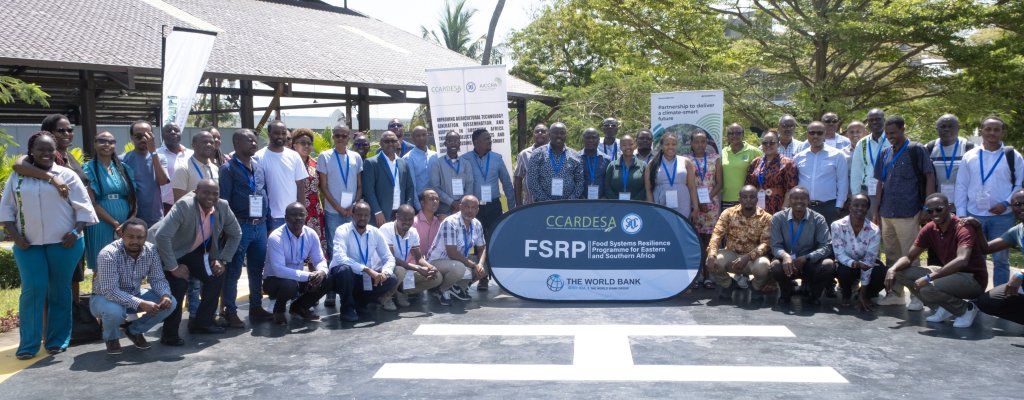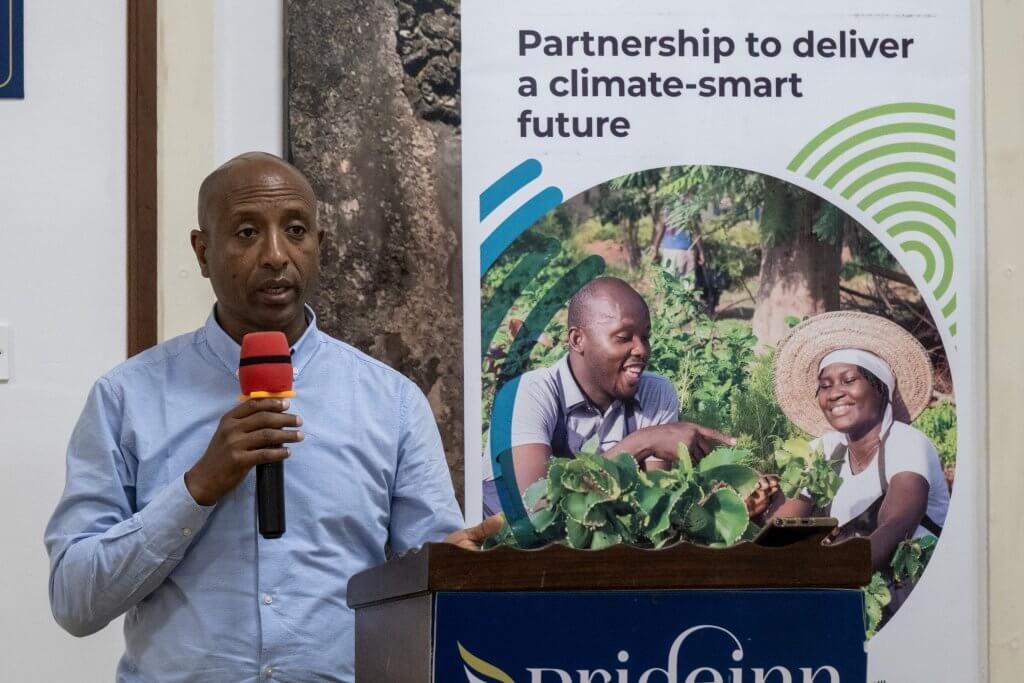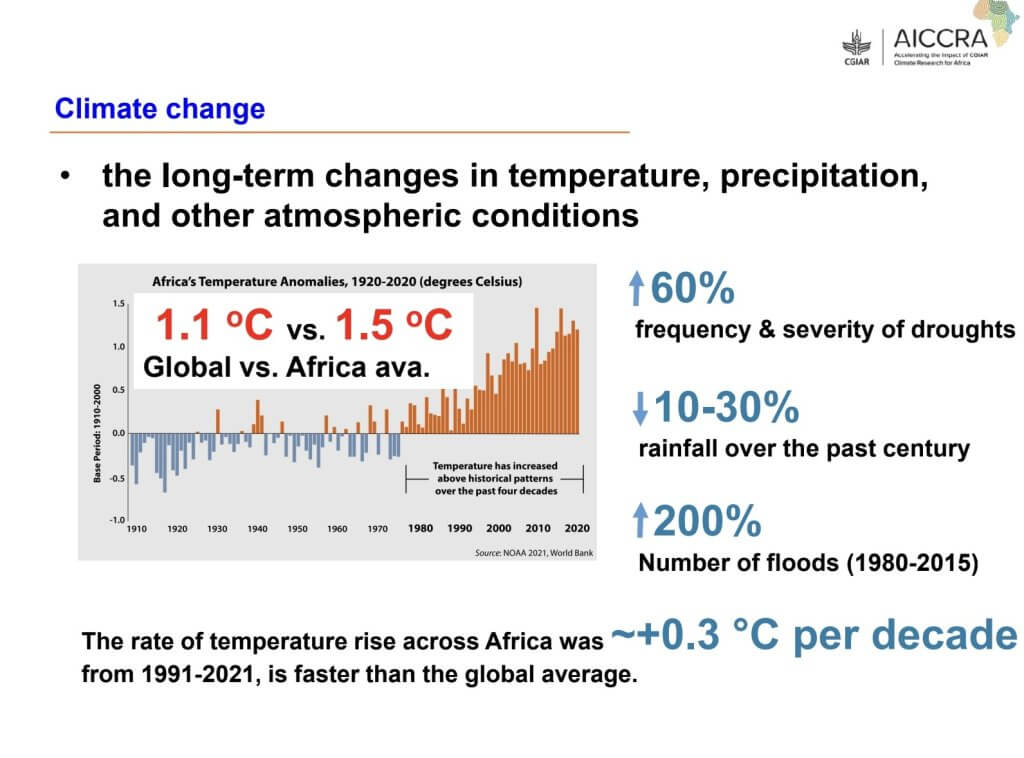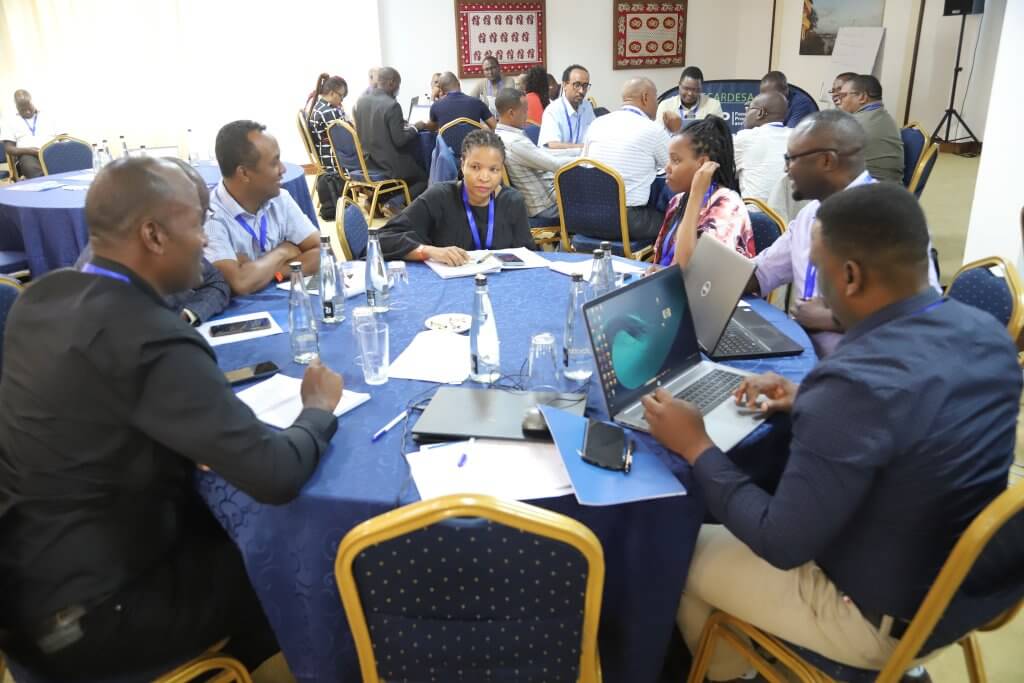Twin challenges: Researchers in Central, Eastern and Southern Africa engage in a climate change and soil health forum to propose actionable recommendations

By Ben Moses Ilakut, Genevieve Apio & Brook Makonnen
MOMBASA, KENYA: Understanding the impacts of climate change and climate variability, including interpreting shifting rainfall patterns, rising temperatures, and increased frequencies of extreme weather events like droughts and flooding is critical in designing climate-smart agriculture practices and technologies, informing decision-making and adaptation strategies, and in climate-related risk management.
To adapt to the impacts of climate change on Agriculture, measures urgently need to be deployed, including systematically integrating climate change into the planning and development of sustainable agricultural systems, integrating multiple livelihood and sustainability goals, balancing between maintaining ecosystems and sustaining productivity, building the resilience of smallholder farmers and livestock keepers to climatic shocks, especially towards longer-term climatic stresses; increasing resource use efficiency; and onboarding women, youth and marginalized groups into the climate change interventions.
These are the key messages that were delivered to African multi-disciplinary researchers, policy leaders, and extension experts during an intense five-day consultative, training, and sensitization workshop organized by a consortium of Africa’s Agricultural Research for Development institutions gathered in Kenya’s Indian Ocean city of Mombasa.
Climate change and soil health are linked
As the waters of the Indian Ocean, also not spared by increasing sea surface temperatures averaging ~0.7 °C between 1982 to 2021, roared in Mombasa, participants drawn from Eastern, Central, and Southern Africa gathered at Pride Inn Paradise Beach Resort from September 23 to 27, 2024 to discuss the impact of climate change on soil health by leveraging on geospatial soil mapping, AI, and integrated gender considerations to influence policy and action to tame climate change.
Leveraging partnerships for impact at scale
Addressing participants, AICCRA Regional Program Leader Eastern and Southern Africa, Dr. Dawit Solomon, said, “The AICCRA project inspiration is to leverage on partnerships to tap into the reservoirs of knowledge and expertise from African institutions to inform and skill climate-smart agriculture interventions currently undertaken by various like-minded institutions regionally.”

Dr. Solomon Dawit – AICCRA Regional Program Leader Eastern and Southern Africa
“Institutions and experts within the region have enormous data from state-of-the-art research, knowledge, technologies and management practices that are underutilized in addressing issues of soil health, adapting to climate change and increasing productivity,” Dr. Dawit said, emphasizing the urgency of the training. “Beyond the training, we expect regional organizations to utilize peer expertise to scale out climate-smart innovations to reach crop and livestock farmers in Africa.”
Complementary skills tapped
Dr. Dawit’s remarks were reinforced by Dr. John Recha, Scientist, International Livestock Research Institute, who noted that while specialized trainers have been sourced from World Agroforestry (ICRAF), the participantsand collaborating partners brought in immense practical skills and field expertise from their institutions which they shared with their peers thereby stimulating discussion on what has worked, challenges and opportunities leading to innovation.

Dr. John Recha Research scientist – International Livestock Research Institute
The training titled “Capacity Building Workshop on Climate-Smart Agriculture, Soil Fertility Management, and Soil Health Monitoring in Eastern and Southern Africa” was organized by the International Livestock Research Institute (ILRI) in collaboration with https://www.cifor-icraf.org/ and regional development and research organizations https://www.asareca.org/, and https://www.ccardesa.org/ and the Intergovernmental Authority on Development (https://igad.int/launching-of-food-systems-resilience-program-for-eastern-and-southern-africa/), the https://www.isric.org/projects/land-soil-and-crop-information-services-lsc-support-climate-smart-agriculture-desira project.
Credit to the World Bank
The comprehensive training was implemented through the Accelerating Impacts of CGIAR Climate Research for Africa (AICCRA) Project, which the World Bank finances.
Day 1
On Day One of the training, interactions centered around understanding climate change incorporating long-term changes in temperature, precipitation and other atmospheric conditions; discussion on the severity of droughts currently estimated at 60 percent, reduction of rainfall estimated at 10-30% rainfall over the past century, increase in number of floods; the paradox of Africa’s limited contribution to greenhouse gas emissions estimated at only 4-6% yet the continent is more affected through global circulation; dealing with exposure of the Continent to the sun; and the high impact of flash floods viz a viz limited water reservoir. The participants delved into a discussion on what can be done to deal with the calamity of a 40 percent increase in carbon concentrations on the continent, as reported by EPA.

“Our economy is affected because we rely on the most vulnerable sector-agriculture, which employs 70% of the population. This is bad news because while this important sector contributes to 15% of Africa’s total Gross Domestic Product, it relies 95 percent on rainfed agriculture and is facing a 34 percent decline in productivity since 1961,” Yosef Amha, one of key trainers, informed participants in a presentation on Climate Change, Global Warming, and Impacts on Agriculture and Food Security.
The participants explored the place of the livestock sector in the climate change context, underscoring the considerable demand for livestock production, particularly in low- and middle-income countries; tradeoffs for livestock and its impact on climate; technologies and practices that help reduce emissions originating from livestock, and improving livestock productivity while improving resilience.
On Day 2
On Day 2, participants interacted in extensive discussions on soil health, understanding the interconnected roles of soil in supporting plant production, water quality, human health, and climate mitigation. They highlighted the impact of various management strategies on crucial soil properties and ecosystem services.
“Soil health is a critical component of agricultural productivity, environmental sustainability, and global food security. Healthy soils are the foundation of life on Earth, supporting plant growth, regulating water, filtering pollutants, and cycling nutrients essential for ecosystems,” participants were reminded by soil experts. “When soils are healthy, they enhance biodiversity, improve crop yields, and contribute to the resilience of agricultural systems against climate change and other environmental stressors. Degraded soils, on the other hand, lead to diminished crop productivity, increased greenhouse gas emissions, and heightened vulnerability to extreme weather events, which can profoundly impact food supply and livelihoods.

Group discussions and interactive sessions
The participants also delved into soil health monitoring, noting that it is essential in ensuring that soils remain productive and sustainable over the long term. The key indicators in assessing soil health included organic matter content, pH levels, nutrient availability, and microbial activity, which help flag potential problems early and signal corrective actions before significant degradation.
Day 3 & 4
On Day 3 and 4, participants continued interacting with soil health trainers. The discussions centered around digital soil mapping and the importance of digital soil maps in informing decision-making. It emerged that most countries in Eastern, Central and Southern Africa are interested in refreshing their soil maps. Some of the key benefits of Mapping Digital Soil Mapping (DSM) included Ease in predicting and visualizing soil properties across landscapes using a combination of field observations, laboratory data, and spatial modeling techniques; ease in integrating modern technologies such as Geographic Information Systems (GIS), remote sensing, and machine learning to create detailed, accurate, and scalable soil maps; provision of information on soil characteristics, such as texture, organic matter content, and pH, which are essential for informed decision-making in agriculture, land management, and environmental conservation; precision in soil management practices to optimize crop production, natural resources conservation; and informing policy on fertilizer use, and zoning crop-livestock hubs.
Participants also learned about the FAIR principles for digital soil data: Findability of data, Accessibility, Interoperability, and Reusability.
Why focus on climate change and soil health

Participants in a practical session of soil sampling and testing
The agricultural sector in Eastern, Central, and Southern Africa is grappling with the impacts of climate change, land degradation, and declining soil fertility. These challenges demand innovative solutions and targeted capacity-building efforts to empower stakeholders with the knowledge and tools necessary for sustainable agricultural practices. Climate-Smart Agriculture (CSA) practices are vital in building resilient agricultural systems that adapt to and mitigate climate change impacts. A key priority is accelerating the restoration and maintenance of soil productivity and ecosystem functions. This must be achieved alongside leveraging soil health management to advance gender equality.
Key statistics highlighted from training
- The long-term changes in temperature, precipitation, and other atmospheric conditions led to:
- 60% Increase in frequency & severity of droughts
- 10-30% reduction in rainfall over the past century
- 200% Number of floods (1980-2015)
- Rate of temperature rise across Africa was ~+0.3 °C per decade
- Atmospheric CO2 concentrations have increased by more than 40% since pre-industrial times, from approximately 280 parts per million by volume (ppmv) in the 18th century to over 420 ppmv in 2023 (EPA, 2023).
- Between 1970 to 2020
- 337 million People affected by climate-related disasters
- 420,000 People died
- 3-5% loss of GDP to climate change by 2030.
- By 2050, potential mean production losses for sub–Saharan Africa are predicted to be high
- Impacts of soil health on productivity in terms of losses
- Sorghum 17 percent
- cassava 8 percent,
- millet 17 percent,
- beans 18 percent,
- maize 22 percent,
